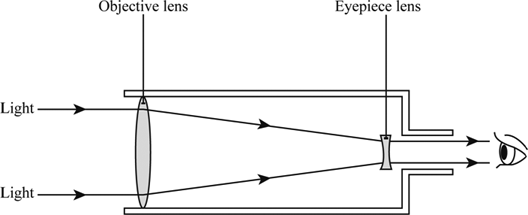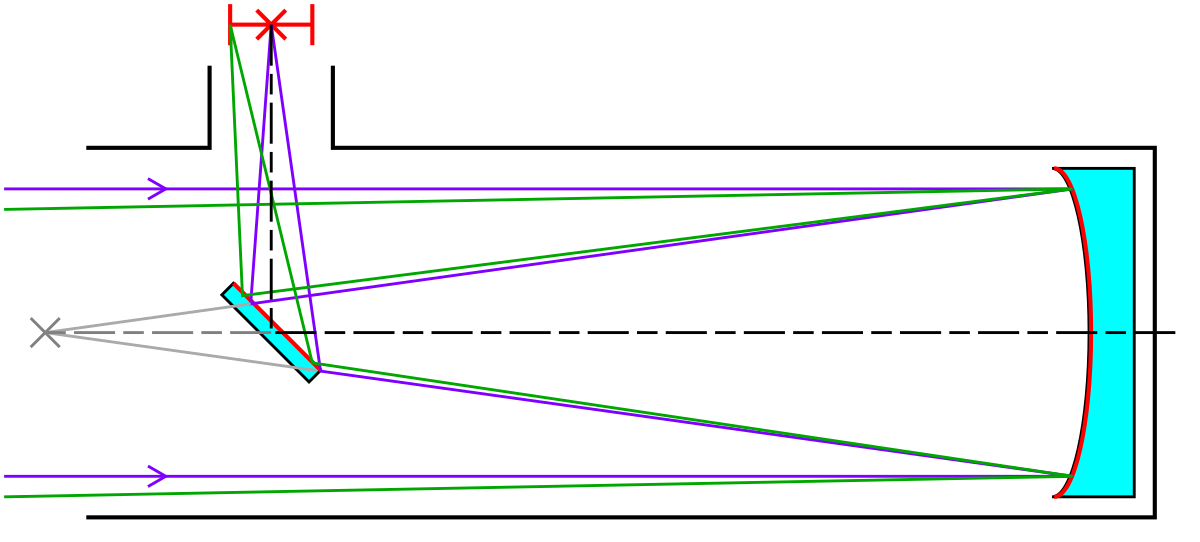Have you ever looked up to a clear sky on a moonless night, in a place away from large cities? If you have, you will remember seeing hundreds of bright stars, and maybe even the faint collective glow of 250 billion more within the Milky Way, our own galaxy.

[Above: the milky way. Image credit: Symmetry magazine]
Ever since we realized that every star we see is a distant Sun like our own, we have been awed by the vastness of our Universe. There is so much out there we do not know! It makes us feel insignificant; and yet, by observing the sky we have the power to learn about the Universe and its structure, understand how it came together, and possibly know its future – and our own, too.
Our eyes are not suited to looking deep in the sky: they are the result of an evolutionary process in which understanding the Universe was less useful than fetching food or fleeing from predators. The night vision of human beings is not intrinsically bad: our eyes can adapt to illumination levels that range by over 12 orders of magnitude. But to study the night sky and its wonders through the visible light they emit, we need optical aids: telescopes.

A refracting telescope (see schematic above, credits mirinstitutions.ac.in) works by converging with lenses the light coming from distant objects into a focal point, such that you may see bright, magnified images of even small and faint objects. It was invented in 1608 by a Dutch eyeglass maker, Hans Lippershey; one year later, the Italian Galileo Galilei was the first to use a telescope to study celestial bodies. With his small instrument Galileo could see planet Jupiter’s satellites and study the craters on our own Moon. That was a gigantic step forward in Science, yet it was only by using much bigger instruments that we slowly acquired a better understanding of our solar system and of its neighboring objects, including stars and star clusters, as well as luminous nebulae, the heated gas clouds where stars are born.
Soon catalogs of non-stellar light sources started to be compiled. The one published in 1771 by French astronomer Charles Messier included 110 objects. Some of them were entire galaxies like our own, which looked small and faint only due to their enormous distance from us. This was not realized until 1926, when the American Edwin Hubble studied them with the 2.5 meter diameter Hooker telescope of Mount Wilson, then the world’s largest such instrument. The Hooker was a reflector telescope, one which focuses light by reflecting it on a parabolic or spherical surface. As mirrors can be built larger than lenses, reflectors are better suited for scientific research. (See below a schematic of a Newton-scheme reflector telescope; image credit:Wikipedia).

Since Hubble we have continued to study both our own galaxy and all others we can see, building bigger telescopes and even sending one named after him to outer space. By working around the clock unhindered by light pollution and water vapor, the Hubble Space Telescope produced a wealth of images of astounding beauty of our cosmos, and countless scientific results. The study of the position of galaxies and their relative motion allowed us to create a pretty clear picture of how the Universe is organized, and how it came together in that form since its original creation in the big bang, 14 billion years ago.
Besides the collection of visible light with optical telescopes, a number of other ways to look at the sky have emerged in the past hundred years, boosting our possibility to collect information. One of them is the study of radio signals: these are a form of electromagnetic radiation of much longer wavelength than visible light. Radio waves thus require less precise focusing to create usable images. This is great news for astronomers, who may construct relatively cheaply very large parabolic surfaces, and use them to study extremely faint signals. What’s more, radio telescopes may operate also in daylight; on the down side, they need to be located away from electromagnetic disturbances of human populated areas, in dry, desert places where water vapor in the atmosphere does not absorb radio waves.

The world’s largest radio telescope is a static 500 meter-wide surface constructed in China (see above, image credit: China daily). Many other facilities are built in interferometric arrays with tens of “dishes” deployed on a large area: their coherent observation of the same source, once account is made of their relative position, produces very high resolution. That technique produces exquisite results, such as the observation of individual planets in distant solar systems, obtained a few years ago by the ALMA radio telescope array.
ALMA (see picture below) is an observatory made up of 66 movable instruments which are deployed on a plain at 5000 meters of altitude in Chile’s Atacama desert. By carrying around the 7 to 12-meter diameter dishes on giant trucks, the observatory can be reconfigured for optimal performance on a wide range of targets.

At the other extreme of the spectrum of electromagnetic radiation, we find in order of decreasing wavelength ultraviolet light, X rays, and very energetic gamma rays. These cosmic messengers offer an entirely different view of the sky, as they bring us news of the most powerful phenomena that take place in the Universe. With X and gamma rays we may probe inside active galactic nuclei, as well as obtain cues of the dynamics of violent star collisions or supernova explosions.
Gamma rays could also result from the annihilation of dark matter, if that unknown substance were indeed made of neutral, massive particles that gravitate around galaxies since the big bang, as some theories predict. The most sensitive instruments allowing these studies, like the FERMI large-area telescope, are mounted on satellites that fly above our atmosphere, thus avoiding its opaqueness to the high-frequency part of the electromagnetic spectrum. That is a good thing for us: our atmosphere protects us from harmful cosmic radiation!
The Earth’s atmosphere does reduce our ability to watch the sky, as you certainly know if you ever bought a telescope: the first rule of amateur astronomers is that the first night they try to test a new scope or equipment, the sky will be overcast. However, the atmosphere is not a complete hindrance: it can actually also help us detect an entirely different category of cosmic messengers. These are called “cosmic rays”: protons, neutrons, and light nuclei accelerated by intense electromagnetic fields in supernova explosions or in the core of galaxies.
As they reach the upper atmosphere, cosmic rays hit and break up oxygen and nitrogen nuclei, producing a shower of thousands of secondary particles of lower energy: ordinary ones like protons, electrons, neutrons, and photons, as well as unstable subnuclear particles like pions, kaons, and muons. While a good part of those secondaries gets absorbed in subsequent interactions in air, some of them reach the ground, where we may detect them by recording the ionization trail they leave behind as they knock electrons off the atoms they encounter along their paths, or the scintillation light released in transparent materials where electrons are excited and then de-excited by close encounters.
------
Tommaso Dorigo (see his personal web page here) is an experimental particle physicist who works for the INFN and the University of Padova, and collaborates with the CMS experiment at the CERN LHC. He coordinates the MODE Collaboration, a group of physicists and computer scientists from eight institutions in Europe and the US who aim to enable end-to-end optimization of detector design with differentiable programming. Dorigo is an editor of the journals Reviews in Physics and Physics Open. In 2016 Dorigo published the book "Anomaly! Collider Physics and the Quest for New Phenomena at Fermilab", an insider view of the sociology of big particle physics experiments. You can get a copy of the book on Amazon, or contact him to get a free pdf copy if you have limited financial means.





Comments